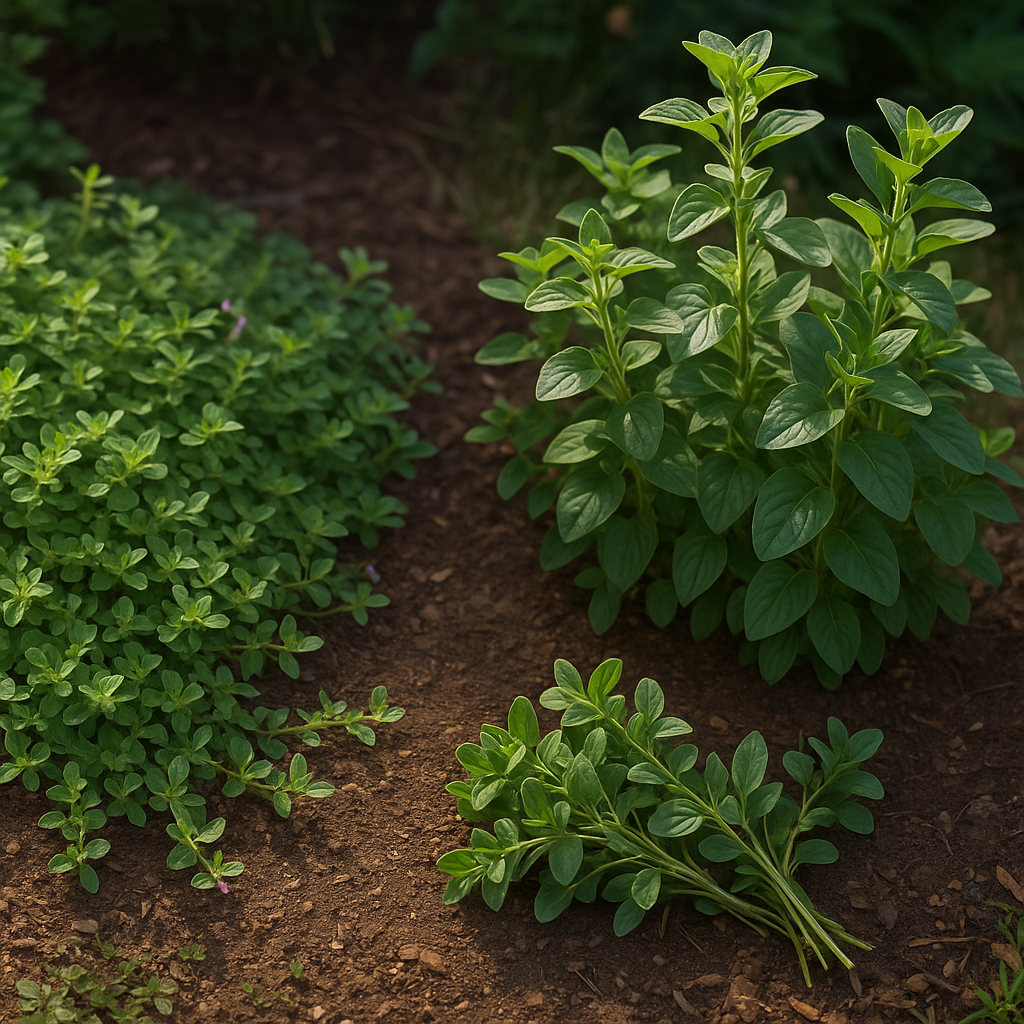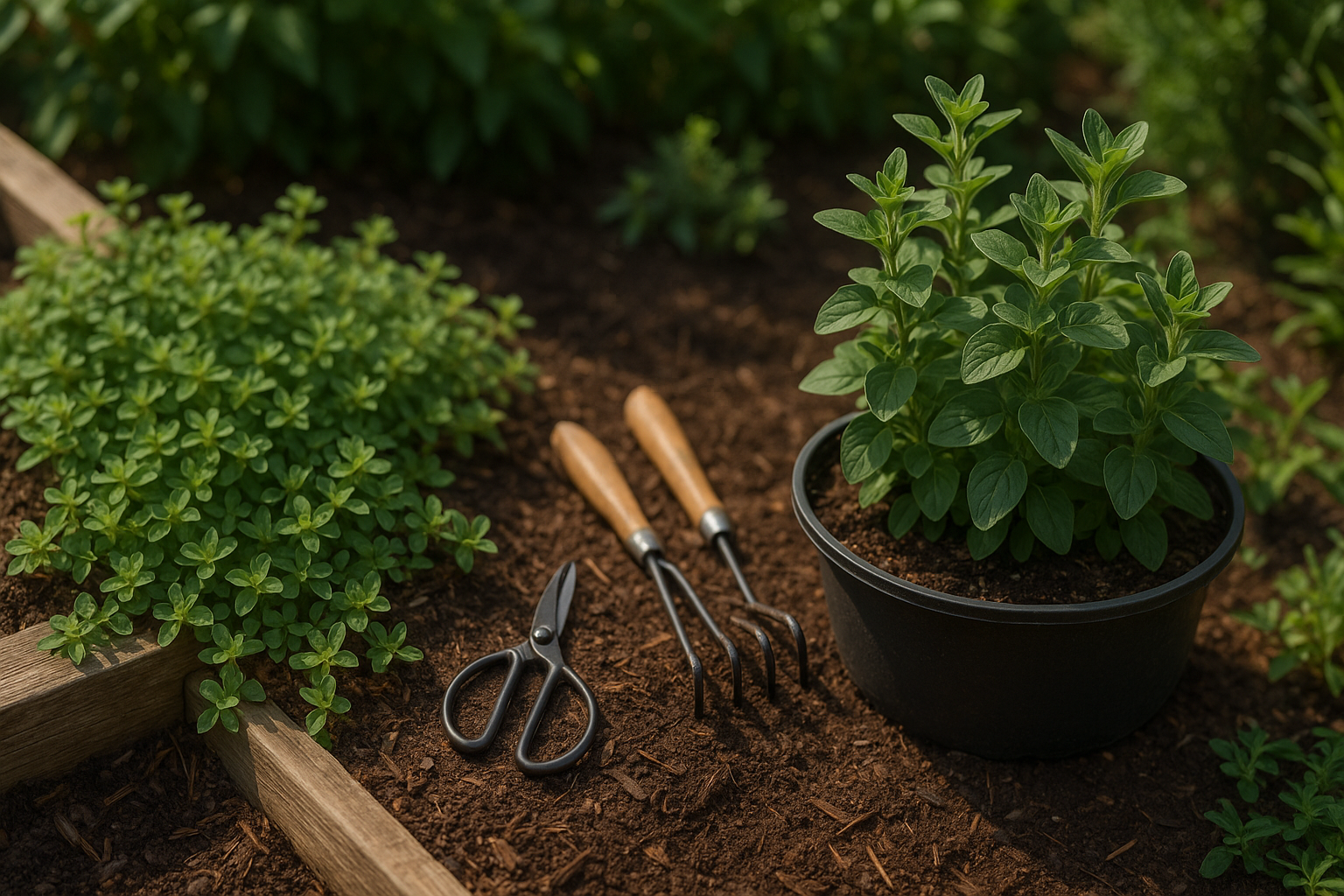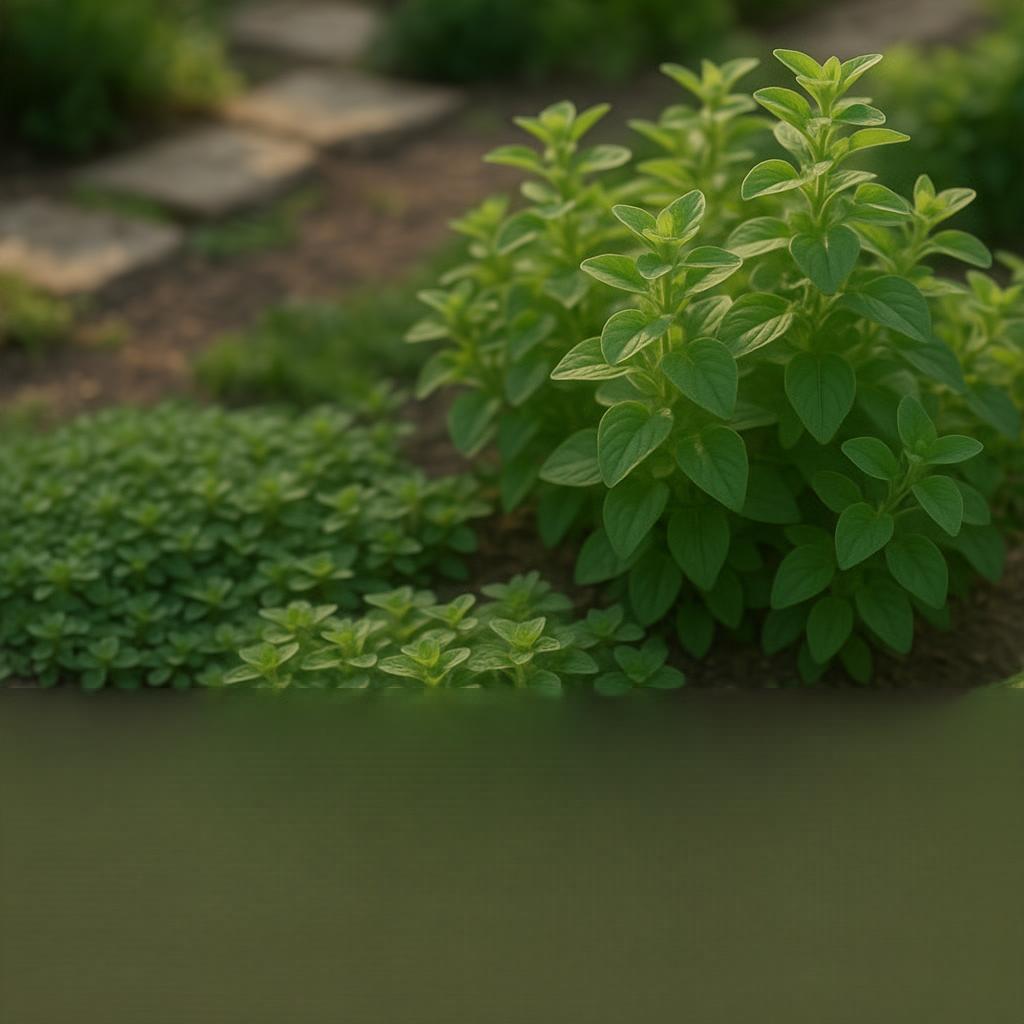Introduction
When it comes to herb gardens, oregano is a staple that offers both incredible flavor and attractive foliage. But understanding the differences between creeping and upright oregano is key to getting the most from this versatile plant. As two of the most popular forms, creeping and upright oregano vary widely in how they grow, how much space they need, and even the best ways to use them in cooking or your landscape.
Choosing the right one for your needs can make the difference between a tidy, productive herb bed and an unruly patch—or between a gorgeous groundcover and a robust source of harvestable leaves. For example, if your main goals include edging pathways or filling gaps between stepping stones, creeping oregano’s spreading habit might be ideal. On the other hand, gardeners interested in abundant, easy-to-harvest sprigs for the kitchen often prefer upright oregano for its bushier, vertical growth.
In this article, we’ll break down the key differences between creeping and upright oregano, including growth habits, care requirements, culinary and ornamental uses, and practical recommendations to help you select the best type for your space and garden goals. Whether you want dense groundcover or flavorful cooking herbs, you’ll find clear guidance to make the right choice.
Key Differences Between Creeping and Upright Oregano

Creeping oregano (often called Oregano vulgare ‘Humile’ or Origanum vulgare subsp. hirtum) and upright oregano (such as Greek oregano, Origanum vulgare, or Origanum heracleoticum) differ noticeably in both appearance and garden function.
Creeping oregano features a low, spreading habit with stems that trail close to the ground, rarely growing taller than 4 to 6 inches but easily spreading 12 to 18 inches or more. Its delicate, oval-shaped leaves form a dense carpet of greenery, making it perfect for filling gaps between stepping stones or along borders, where it acts as a living mulch to suppress weeds. Popular creeping varieties include ‘Compactum’ and ‘Aureum’ (golden oregano), both valued for their soft texture and vibrant color.
In contrast, upright oregano varieties grow in bushy mounds, typically reaching 18 to 24 inches tall with a similar or slightly smaller spread. Their leaves are often larger, more aromatic, and borne on woody, sturdy stems. A classic example is the robust and flavorful Greek oregano, a kitchen favorite known for its strong scent and taste. Upright types like Italian oregano (Origanum × majoricum) or Origanum vulgare ‘Hot & Spicy’ are frequently planted in herb gardens or containers where easy harvesting and visual height are desired.
In the landscape, the difference is striking: creeping oregano creates a soft, almost mat-like groundcover, while upright oregano forms a fuller, bush-like presence that stands out in mixed borders or alongside other perennial herbs. Choose creeping oregano to fill space and add gentle color pathways, or opt for upright oregano for a more prominent culinary use and a vertical accent in your edible garden.
Growth Habits and Ideal Growing Conditions

Creeping and upright oregano offer versatile options for gardeners, but their growth habits and needs vary slightly. Creeping oregano (Origanum vulgare ‘Humile’) is a low-growing ground cover with rapid, spreading growth, especially vibrant from late spring through early fall. Its quick growth makes it ideal for covering bare spots or trailing over container edges, but it requires regular trimming to keep it in bounds.
In contrast, upright oregano varieties like Greek or Italian oregano (Origanum vulgare subsp. hirtum) form bushier clumps that tend to grow slower, reaching 12 to 24 inches tall. Upright types are less aggressive but still benefit from occasional pruning after flowering to encourage bushier growth and prevent legginess.
Both types love full sun—at least six hours daily—for the most robust flavor and dense foliage. While oregano is drought-tolerant once established, it prefers well-draining, moderately fertile soil. Heavy clay or soggy roots will quickly stunt growth, so mix in some sand or compost, or plant in raised beds if drainage is an issue.
For containers, choose pots with good drainage holes; allow the top inch of soil to dry before watering deeply. Oregano fits almost anywhere: trailing in hanging baskets, edging raised beds, or tucked in sunny garden corners. Creeping types are particularly well-suited for spilling over walls or between patio stones, while upright oregano shines in herb gardens or companion plantings with tomatoes and peppers.
Regular harvests or light trims help keep plants tidy—just avoid cutting into woody stems, and always leave a few leafy shoots for recovery. By matching the right oregano type with your space and tending to sun and soil needs, you’ll enjoy thriving, flavorful plants in any garden setting.
Culinary and Decorative Uses
Oregano is a versatile herb, but not all types are created equal when it comes to flavor and function. Upright oregano, often found in Mediterranean kitchens, is prized for its robust, peppery taste that holds up well to cooking. This intense flavor makes it a go-to seasoning for pasta sauces, pizzas, roasted vegetables, and grilled meats—especially in Italian, Greek, and Turkish recipes.
In contrast, creeping oregano (also called oregano ‘humile’) offers a milder, more subtle flavor. It’s less common in heavy-flavored dishes but a lovely addition to salads, infused oils, or as a fresh topping for lighter fare.
Beyond the kitchen, creeping oregano shines as an attractive, aromatic groundcover in gardens. Its low-growing, spreading habit makes it ideal for edging walkways, filling in between stepping stones, or controlling soil erosion on gentle slopes. The tiny, purple-tinged flowers attract pollinators, adding another layer of appeal.
Harvesting Tips
Upright oregano benefits from regular trims just before flowering, when the leaves are most flavorful—snip stems early in the morning after the dew dries, and dry bunches upside down in a cool, dark spot.
Creeping oregano can be harvested similarly, but because it hugs the ground, use scissors to trim only the top few inches. This allows the plant to recover and continue its decorative role. A helpful tip: avoid cutting creeping oregano back too aggressively, as it can disrupt its groundcover density and ornamental value.
By understanding these differences, home cooks and gardeners alike can make the most of oregano’s unique qualities in both the kitchen and landscape.
Pros and Cons for Home Gardeners
Choosing the right perennials for your garden means weighing the pros and cons of each type, especially when considering space, maintenance, and your gardening experience. For example, spreading perennials like mint or daylilies quickly fill empty spaces, making them perfect for large gardens or spots where you want lush ground cover with minimal effort. They generally require less weeding and can often fend for themselves, which suits seasoned gardeners managing big plots. However, their vigorous growth can become invasive, overrunning other plants or popping up in unwanted areas, so they need regular monitoring and root barriers.
On the other hand, clumping perennials such as hostas or echinacea grow in tidy mounds and stay where planted, making them great for small spaces, borders, or container gardens. These are ideal for beginners because they’re easy to manage and rarely need dividing, though they might not spread quickly to fill empty spots. Their main drawback is slower expansion, so patience is needed if you want instant coverage.
Regarding overwintering, most perennials survive cold months, but some—especially tender types—may need mulch or extra care, particularly in harsh climates.
If you’re just starting out, opt for clumping varieties or sturdy, low-maintenance spreaders that are less aggressive. Experienced gardeners might enjoy the challenge and visual impact of managing ambitious spreaders.
Comparison at a Glance
| Type | Garden Space | Maintenance | Invasiveness | Overwintering | Beginner Friendly |
|---|---|---|---|---|---|
| Spreading | Large/expansive | Moderate-High | High | Good/Variable | Moderate |
| Clumping | Small/controlled | Low | Low | Good | High |
How to Decide
Choosing the right oregano for your garden starts with a few simple questions: Do you prefer a bold, peppery flavor for cooking, or are you growing it mainly for attractive ground cover and ornamental value? Are you working with a sunny windowsill, small containers, or a large open patch outdoors?
For small urban gardens or windowsills, Greek oregano (Origanum vulgare subsp. hirtum) is a great option—its compact size and intense flavor make it ideal for culinary use in limited spaces. Gardeners in hotter, drier climates will find Greek oregano thrives where water is scarce and soil isn’t perfect.
Italian oregano (Origanum x majoricum), on the other hand, is perfect if you want a milder, slightly sweeter leaf—great for fresh salads, pizza, and Italian dishes. It tends to grow larger and can serve as a soft, aromatic border in traditional garden beds. For those in cooler, wetter climates, Italian oregano may be hardier and return reliably each spring.
To ensure healthy plants, make sure both types get at least six hours of sunlight daily and well-drained soil. Avoid overwatering, especially for Greek oregano, which resents soggy roots. Pinching back stems encourages bushy growth and bigger harvests, regardless of the variety.
If you’re unsure which fits your needs best, try growing both types in small pots first—taste and compare fresh leaves, watch their growth habits, and see which thrives in your garden’s unique microclimate. Oregano is resilient and forgiving, so don’t be afraid to experiment until you find your favorite. The joy is in discovering what works best for your space and your taste buds!
Conclusion
Creeping and upright oregano each bring unique flavors, textures, and uses to the home garden. Creeping oregano forms a low, spreading mat, making it ideal for ground cover, edging, or even container gardens, while upright oregano grows taller, offering bushy foliage perfect for culinary harvesting and ornamental beds.
Choosing between the two depends on your gardening goals: if you want a fragrant, bee-friendly groundcover or living mulch, creeping oregano is a fantastic pick. For abundant herb harvests and standout flavor in the kitchen, upright oregano fits the bill.
Consider your available space, sunlight, and how you plan to use the herb—whether for enhancing homemade pizzas or brightening a garden pathway. Starting oregano from seed or nursery starts is easy, and both varieties thrive with minimal fuss.
Why not add oregano to your herb collection and see which type fits your needs best? Share your experiences in the comments—your tips might inspire other gardeners! For more information, check out reputable sources like university extension websites, gardening forums, or dedicated herb gardening books to dive deeper into oregano care and creative uses.
Your herb garden journey is just beginning, and there’s a whole world of flavors to explore!
